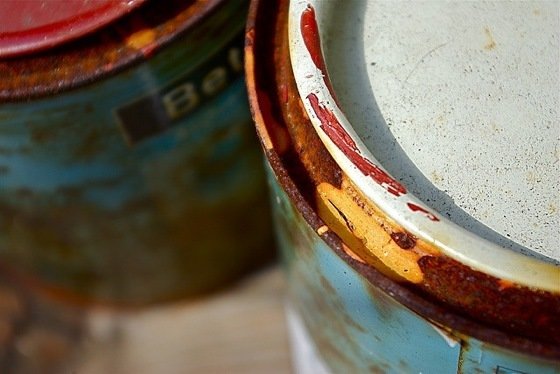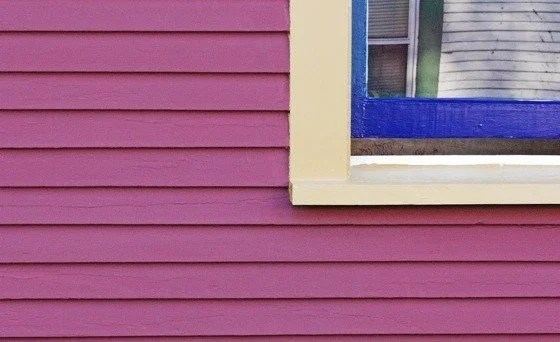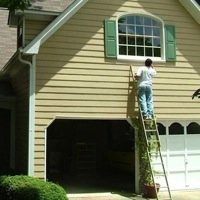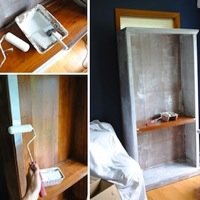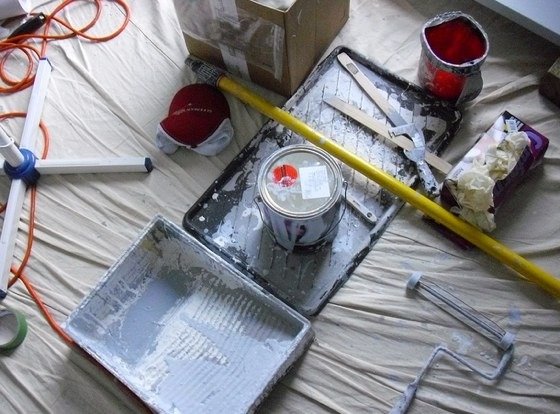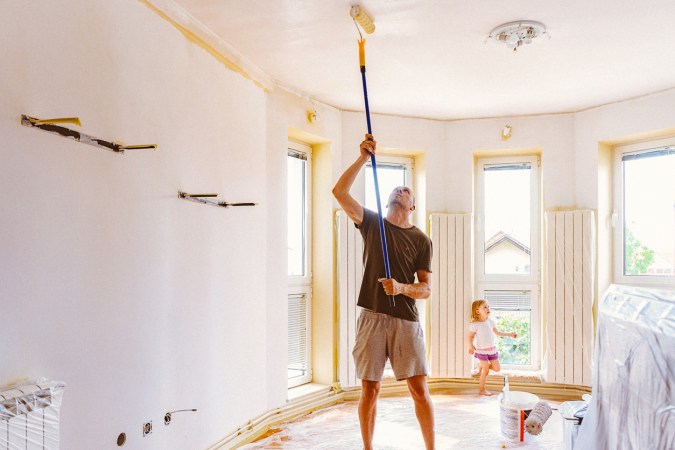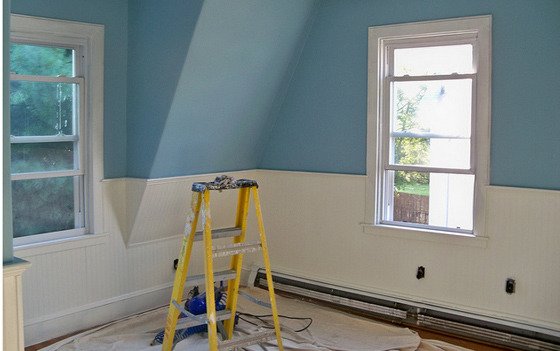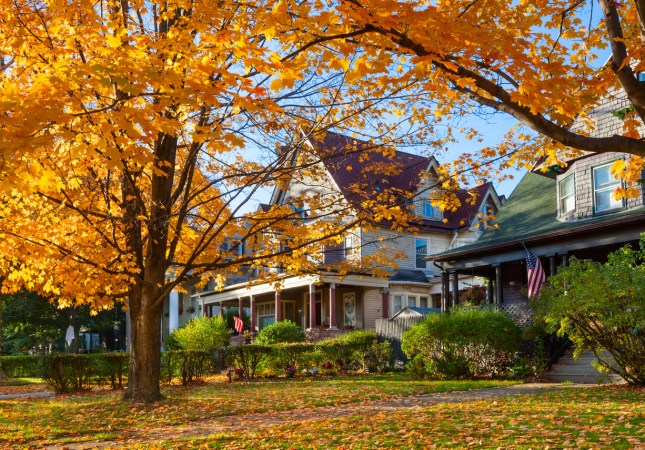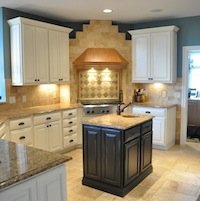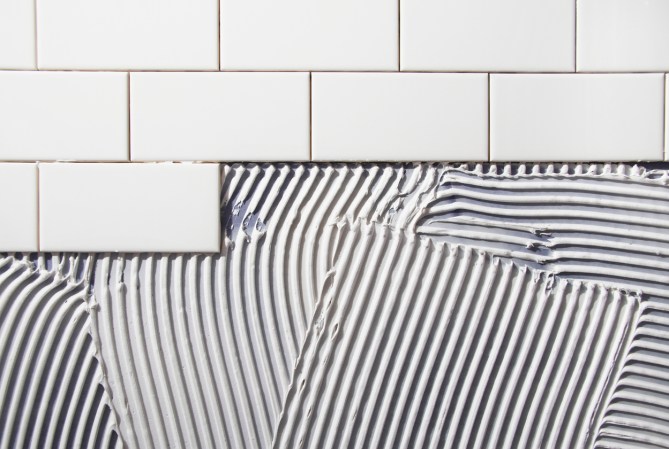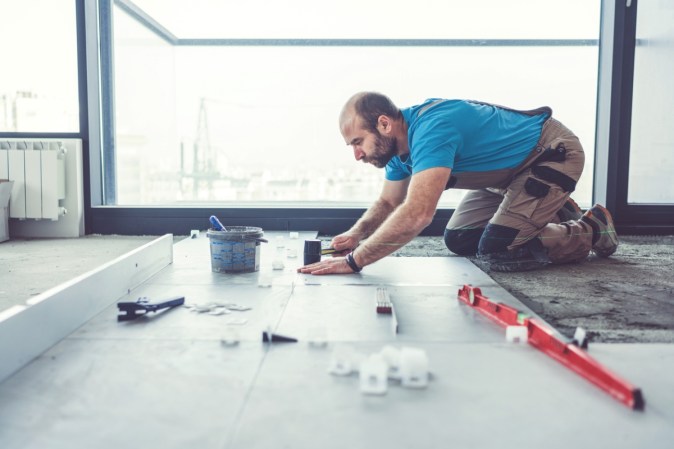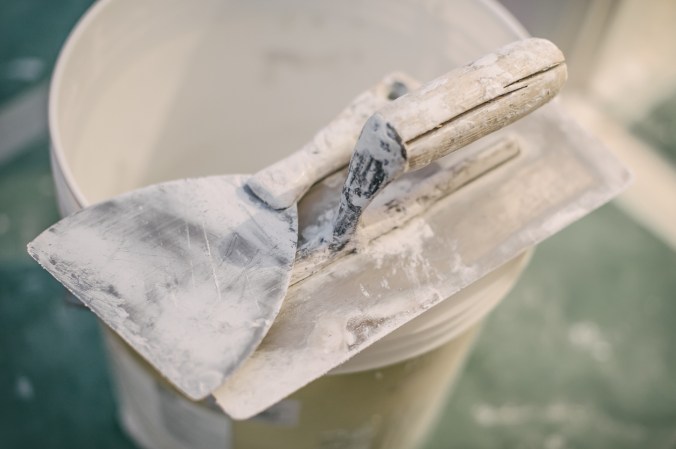We may earn revenue from the products available on this page and participate in affiliate programs. Learn More ›
Start any exterior paint job by cleaning, scraping, and repairing the surface. Take notice of how the paint has weathered and any surface problems. Chalking, blisters, peeling, cracking, and stains must be dealt with before applying a new coat. Unless the cause is discovered and corrected, the problem will reappear and ruin your fresh paint job.
Temperature Blisters
Paint bubbles can show up pretty quickly, from within a few hours to a few days after application. The blisters are only in the top coat of paint and appear most often in oil-based paint. A quick rise in temperature, like sunlight shining directly on the newly painted wood, causes a thin skin to form on the outer surface of the paint. The skin traps inner wet paint that produces vapor when it heats up. The vapor expands and causes the paint to blister from underneath.
To repair blisters, scrape them off, smooth the edges, and repaint, being sure to avoid direct sunlight while the coat dries. Experts suggest establishing a painting order that follows the sun around the project. Thick coats and dark colors are more likely to blister than light colors and thinner paint.
Moisture Blisters and Peeling
Moisture causes problems for paint. Rain, dew, ice, and snow on the outside or vapor and moisture buildup from the inside can cause problems with exterior paint. When moisture penetrates the paint, blisters can form and paint can peel. Moisture blisters, unlike temperature blisters, go through all coats of paint down to the wood.
To stop moisture blisters, you must locate the source of the moisture and repair it. Improper construction techniques and lack of flashing can cause outside water to pool at joints, on window sills, frames, or on the end grain of the wood.
Water vapor moving through walls to the outside paint can come from plumbing leaks, sink or tub overflows, cooking, or using a humidifier. The vapor moves through exterior walls if there is not a vapor barrier or if the barrier is incorrectly installed. Look for this deterioration particularly outside bathrooms, laundry rooms, kitchens, and the gable ends of the attic.
Intercoat Peeling
Another type of peeling occurs when a newer coat of paint separates from the coat underneath. An inadequately prepared or dirty surface is one cause for a weak bond. Another is that the two paint layers are incompatible. For example, an oil-based paint may have been applied over a latex-based paint. They are incompatible and can peel away from one another.
Peeling can also occur when too much time has elapsed between applications of the primer coat and the top coat. If more than two weeks separates the primer application and the paint coat, the primer’s surface can begin to break down and prevent proper bonding with the paint. To correct the problem, you must remove the paint and properly clean the surface.
Cross-Grain Cracking or Crazing
Too many layers of paint or one layer that is too thick can result in an interconnected, uneven pattern of cracks. The thick paint is unable to expand and contract with the wood, so breaks result, starting in the outer layers. If the problem is not corrected, moisture enters the paint layers, causing deeper cracking and deterioration.
Surface cracking may require sanding and repainting. Deeper cracks will require a complete removal of the old paint. Once the wood is bare, clean it and treat it with a paintable, water-repellant preservative. Once the preservative has dried, apply a primer and top coat at the recommended spread rates.
Chalking
Some exterior paint has a powdery coating. Chalking comes from the disintegration of the paint resin due to exposure to the sun’s ultraviolet rays. This gradual deterioration is how paint is supposed to age. Too much, however, can cause discoloration of other painted areas below as rain washes off the chalk. It also signals that the paint is rapidly deteriorating.
Chalking was more of a problem with older paints that contained excessive pigment for the amount of binder, but other triggers include the failure to properly prime and seal exterior wood, spreading the paint too thinly, or thinning the paint too much. To correct excessive chalking, the surface must be cleaned and repainted.
Staining
A stain is typically caused by moisture. The most common source is rusting metal nails or anchoring devices in the wood. The second cause is a chemical reaction between moisture and wood, such as red cedar, which results in color buildup on the surface.
Rusty nails can be hand sanded and coated with a rust inhibitor and finish coat. Unless the wood is too fragile or the exposure of the nail head is related to the original construction system, it’s best for nail heads to be countersunk, primed, and filled before painting. Stains from wood extracts need to be cleaned, rinsed, dried, and primed with a stain-blocking primer before applying the finish coat. Check with a knowledgeable local paint retailer for the best cleaning mixture.
